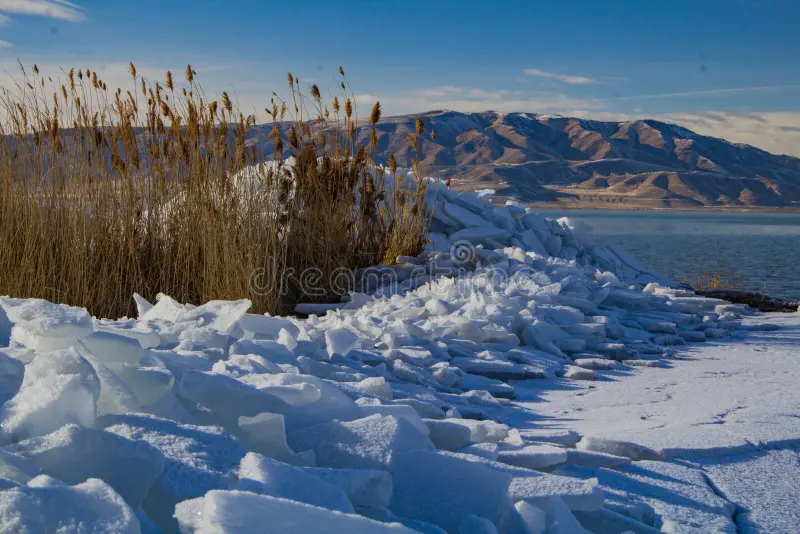As the seasons change, one of the most compelling natural phenomena unfolds in the polar regions of our planet: the drifting of ice sheets. These silent voyagers, forged in the depths of the world’s coldest regions, embark on journeys across the oceans, carrying with them tales of climate, ecology, and human impact. Their movement is not just a spectacle but a critical indicator of the health of our planet.
Formation and Characteristics
Drifting sheets of ice, also known as sea ice or pack ice, form when ocean water freezes. Unlike icebergs, which originate from glaciers or ice shelves and are composed of freshwater, sea ice forms from the saline waters of the ocean. This process usually begins in the fall when the temperatures start to drop, and the surface water begins to freeze. Over time, the ice thickens and expands, often reaching several meters in thickness.
Sea ice is categorized into two types: first-year ice and multi-year ice. First-year ice forms and melts within a single season, while multi-year ice survives through multiple seasons and is thicker and more stable. The drift of these ice sheets is influenced by several factors, including wind, ocean currents, and the Earth’s rotation, creating a dynamic and ever-changing environment.
The Journey of Drifting Ice
As these sheets of ice drift, they become integral to the oceanic ecosystem. They serve as platforms for marine mammals like seals and polar bears and play a crucial role in the life cycle of various organisms. For instance, algae that thrive on the underside of the ice sheets provide food for zooplankton, which in turn are consumed by larger marine animals. Thus, the drifting ice sheets are more than just frozen water; they are hubs of biodiversity.
The drift patterns of ice sheets are primarily determined by wind and ocean currents. The Coriolis effect, resulting from the Earth’s rotation, causes the ice to drift to the right in the Northern Hemisphere and to the left in the Southern Hemisphere. This movement is not uniform and varies with the seasons and prevailing weather conditions. For example, in the Arctic, the ice drifts in a circular pattern known as the Beaufort Gyre, while in the Antarctic, it follows a more linear pattern due to the influence of the Antarctic Circumpolar Current.
Impact on Climate and Environment
The drifting of ice sheets has profound implications for the global climate and environment. One of the most significant impacts is on the Earth’s albedo, which is the measure of how much sunlight is reflected by the Earth’s surface. Ice and snow have a high albedo, meaning they reflect most of the sunlight that hits them. As ice sheets drift and melt, they expose the darker ocean water, which absorbs more sunlight and accelerates the warming process. This feedback loop contributes to the rapid changes observed in the polar regions.
The melting of sea ice also influences ocean circulation patterns. As the ice melts, it releases freshwater into the ocean, which can alter the salinity and density of the water. These changes can affect the thermohaline circulation, a global system of ocean currents that plays a critical role in regulating the Earth’s climate.
Human Influence and Implications
Human activities have significantly impacted the formation and movement of drifting ice sheets. Climate change, driven by greenhouse gas emissions, has led to a decrease in the extent and thickness of sea ice. This trend is particularly evident in the Arctic, where the ice cover has been shrinking at an alarming rate. The loss of sea ice not only threatens the survival of polar species but also opens up new challenges and opportunities for humans.
The reduction in sea ice has made the Arctic more accessible for shipping and resource exploration. The opening of the Northwest Passage, a sea route through the Arctic Ocean, has garnered interest from various countries and companies looking to exploit its potential. However, increased human activity in these fragile environments poses risks to the delicate ecosystems and the indigenous communities that depend on them.
Future Outlook and Conservation Efforts
The future of drifting ice sheets is uncertain, but their importance cannot be overstated. As the world grapples with the effects of climate change, understanding and preserving these natural wonders is crucial. Efforts to monitor and model the behavior of sea ice are essential for predicting future changes and implementing effective conservation strategies.
International cooperation is vital in addressing the challenges posed by the drifting of ice sheets. Agreements like the Paris Agreement aim to reduce greenhouse gas emissions and mitigate the effects of climate change. Additionally, initiatives to protect the Arctic and Antarctic environments, such as establishing marine protected areas and regulating shipping and resource extraction, are crucial steps toward ensuring the survival of these unique ecosystems.
In conclusion, drifting sheets of ice are more than just a fascinating natural phenomenon. They are integral to the health of our planet, influencing climate, ecosystems, and human activities. As we navigate the challenges of the 21st century, the preservation of these silent voyagers must remain a priority.
